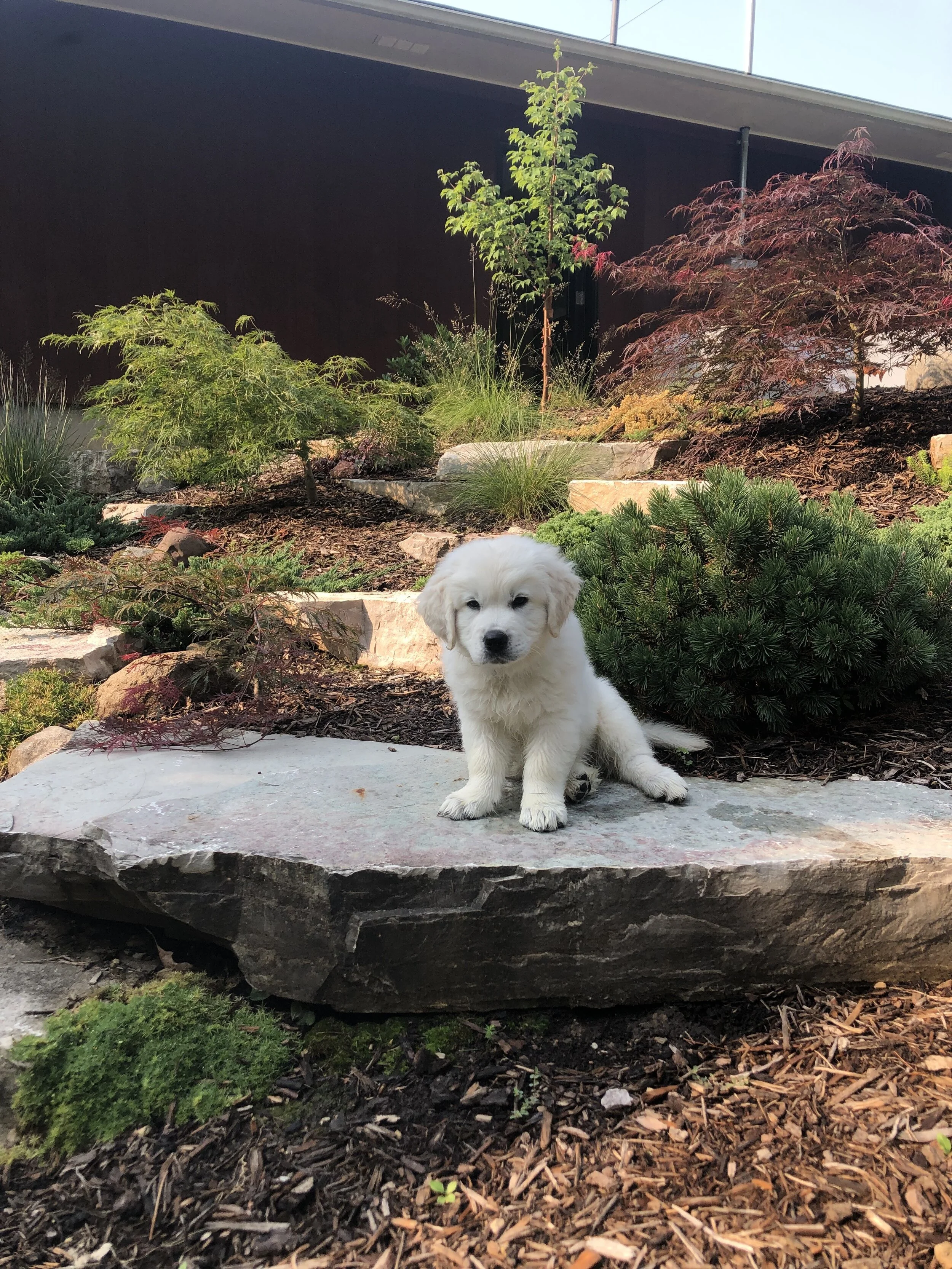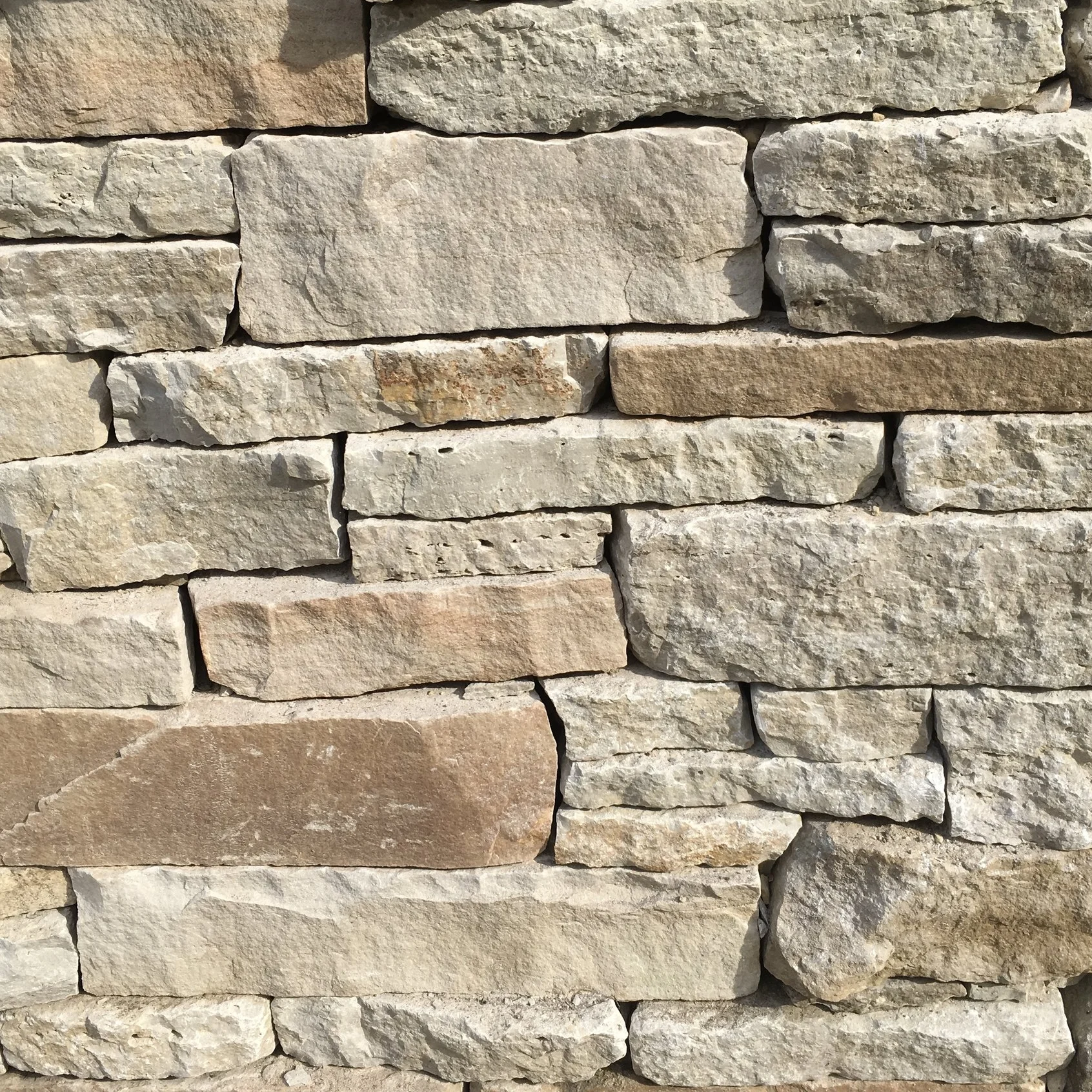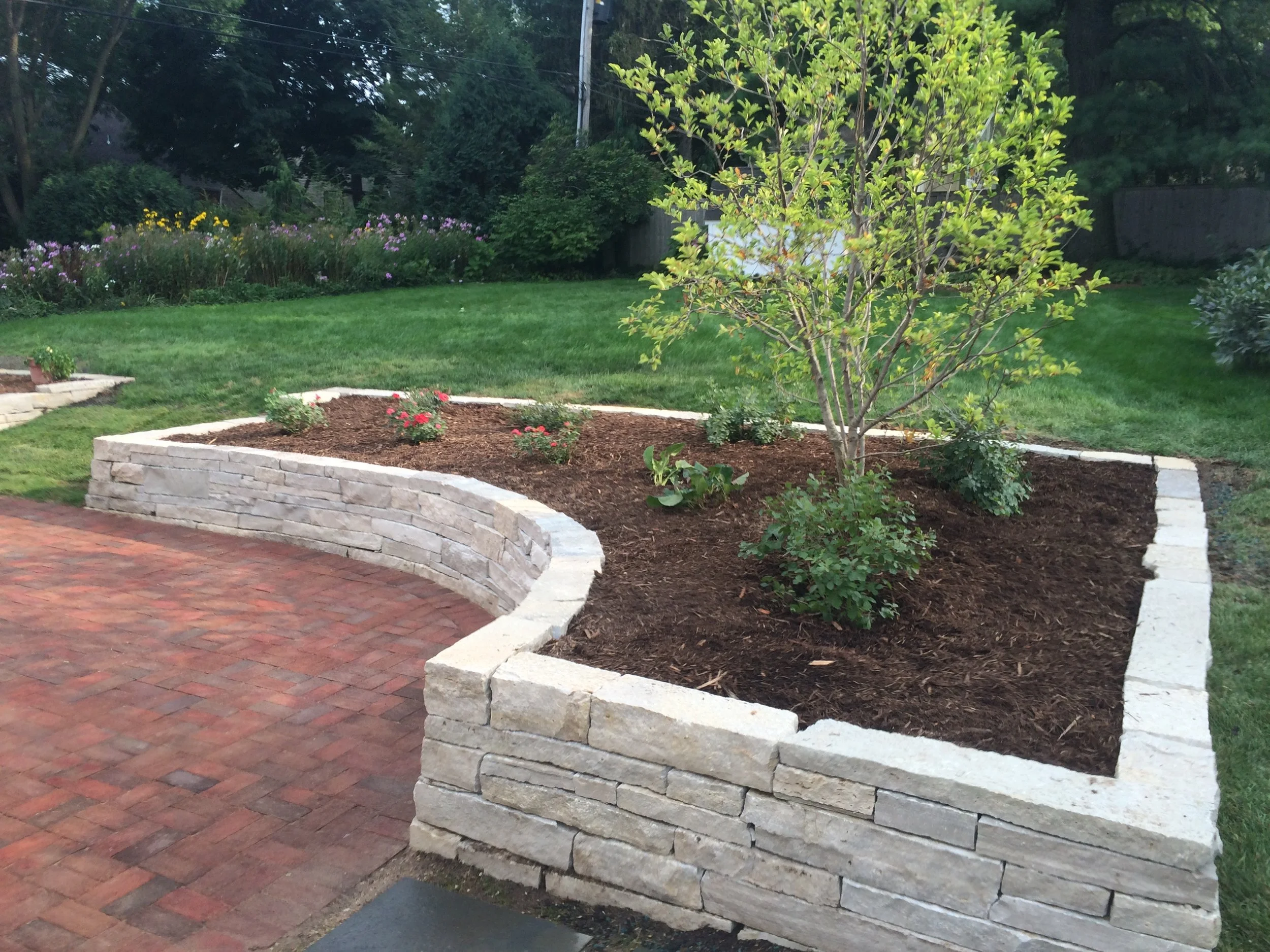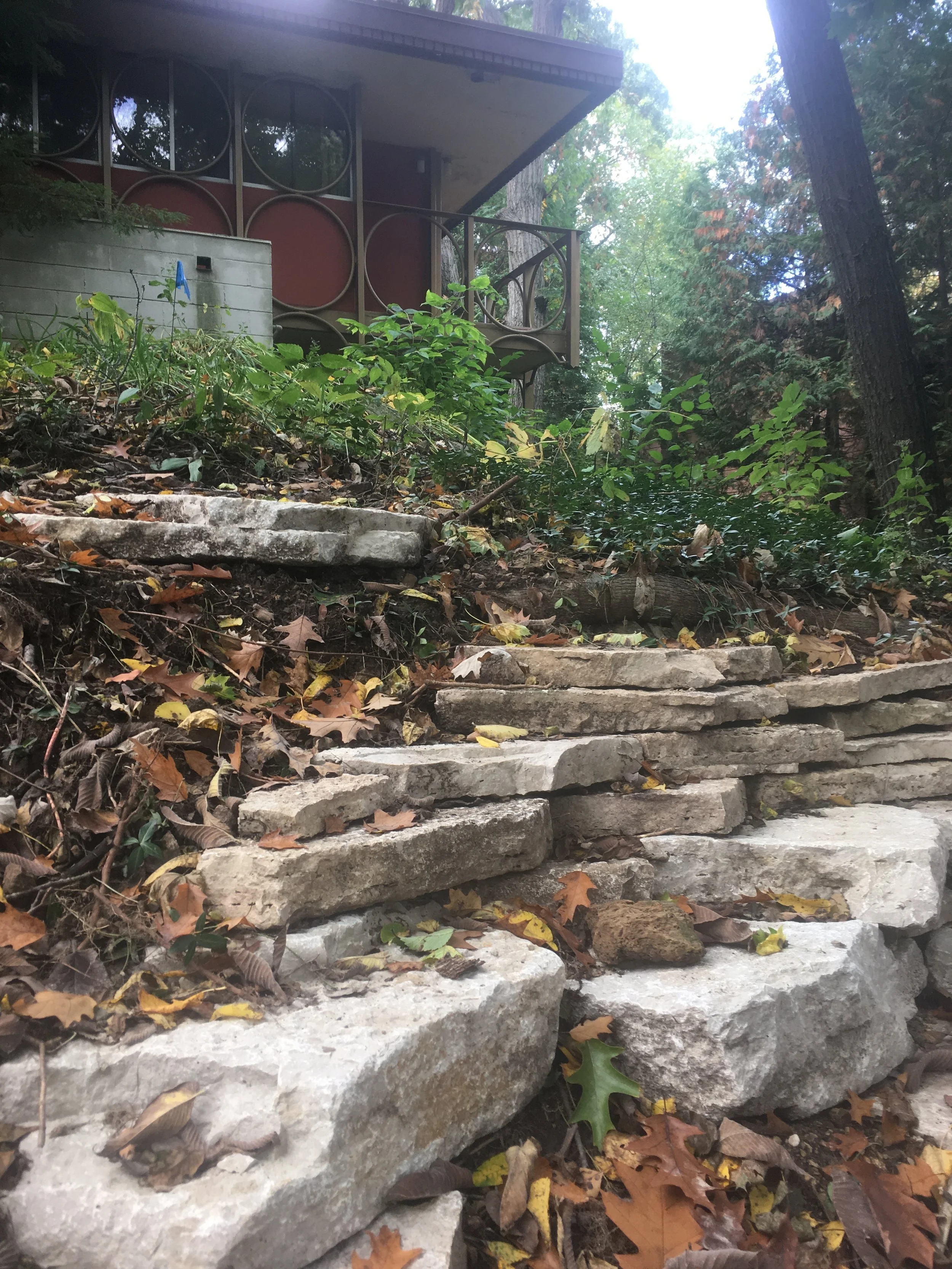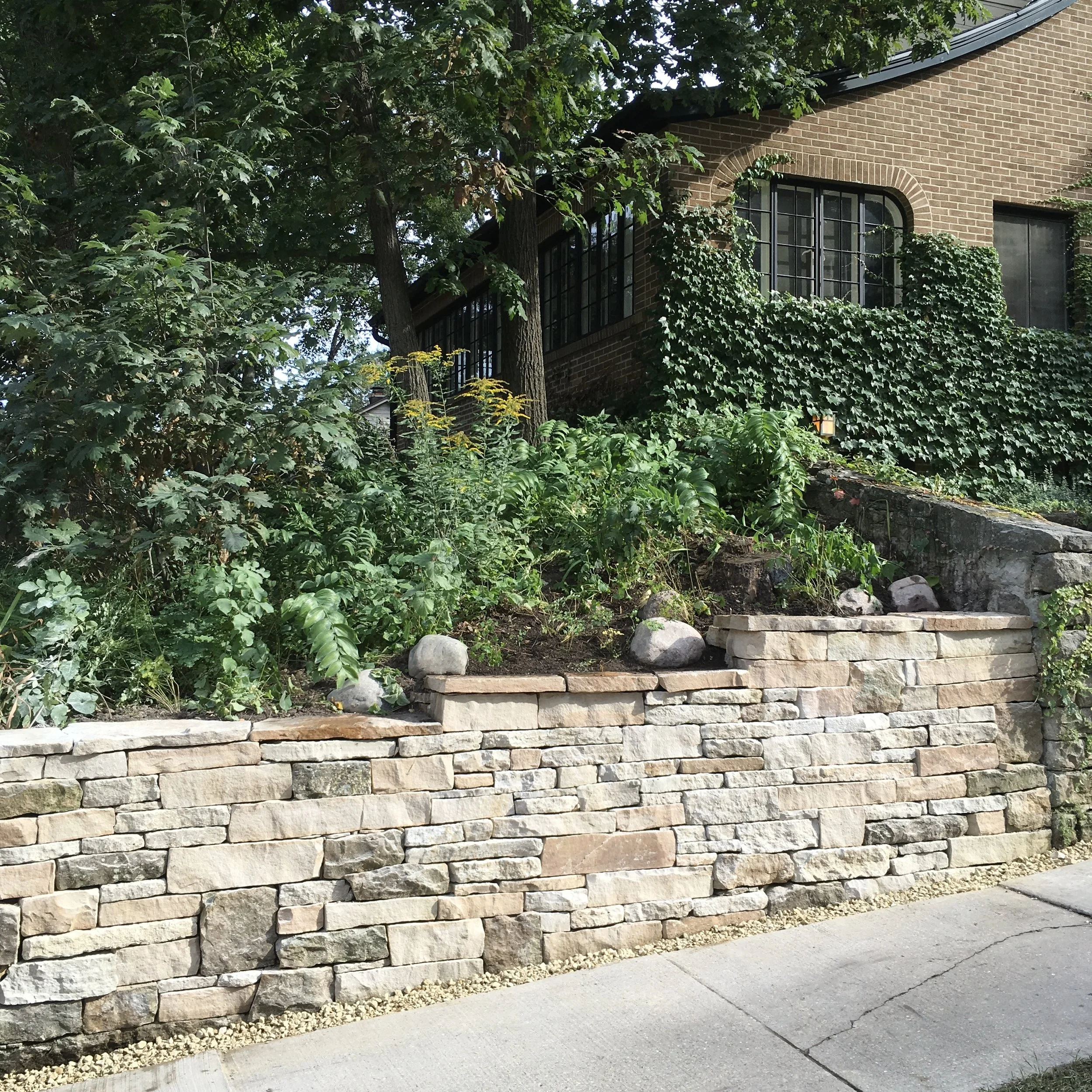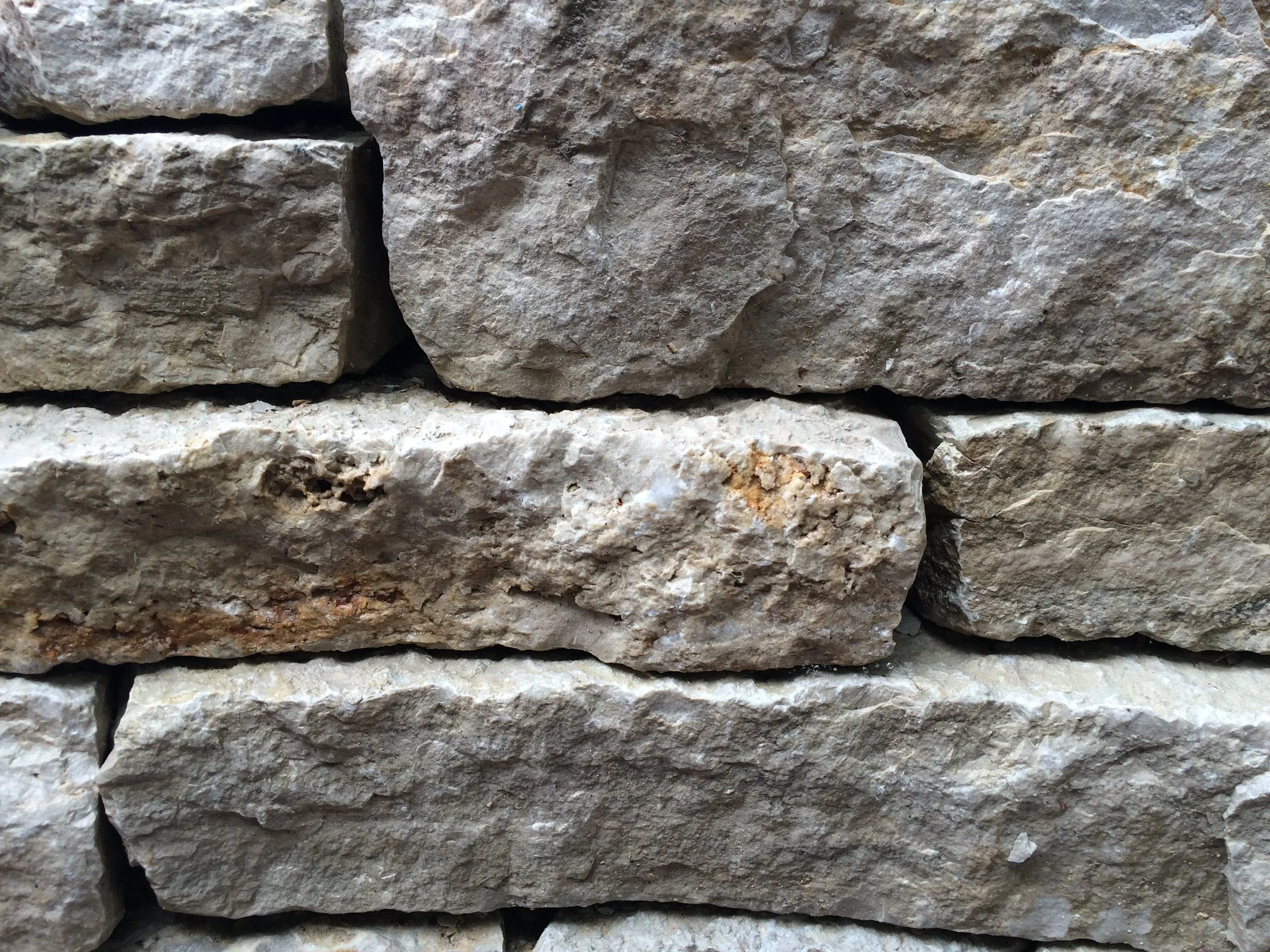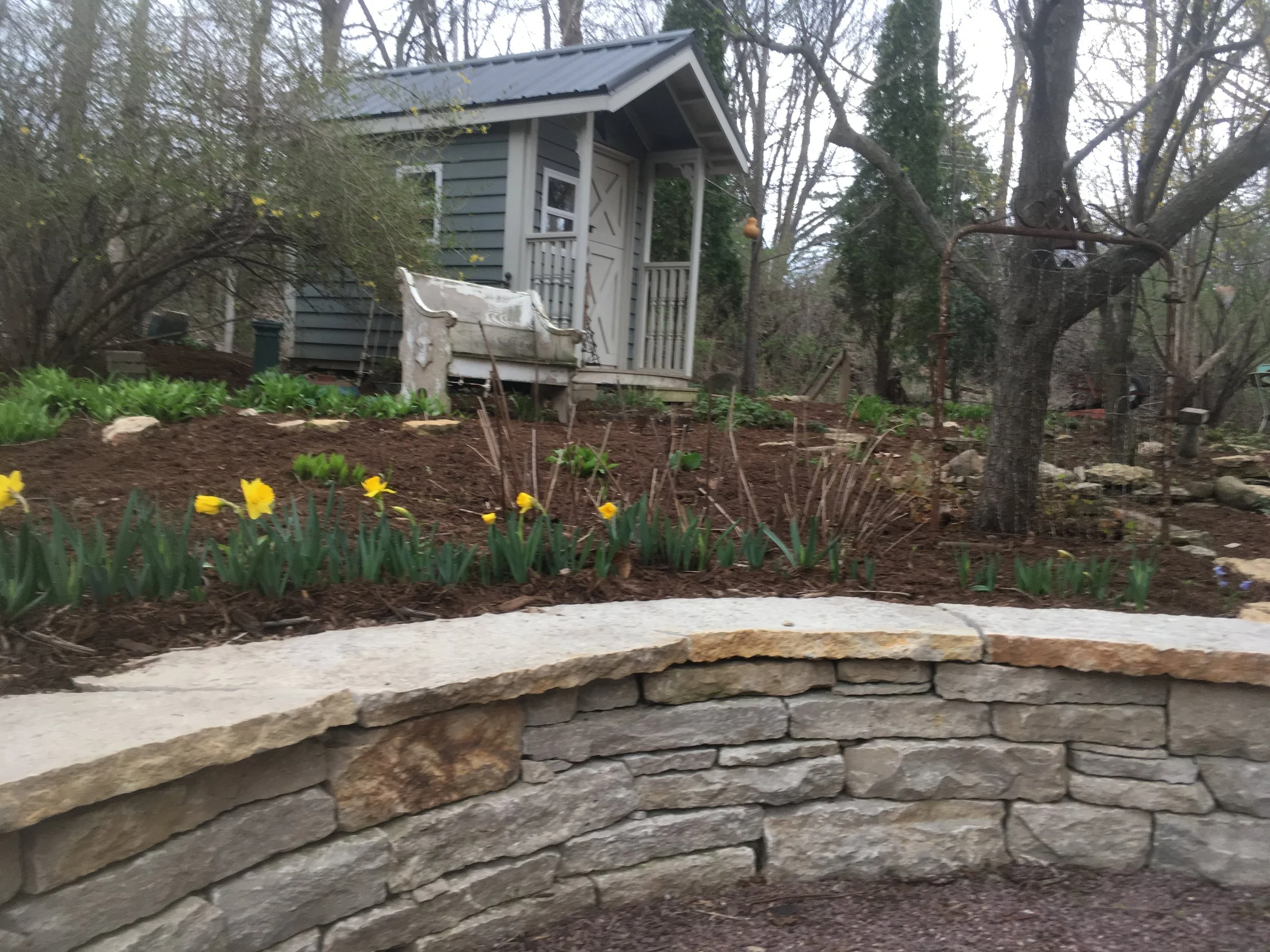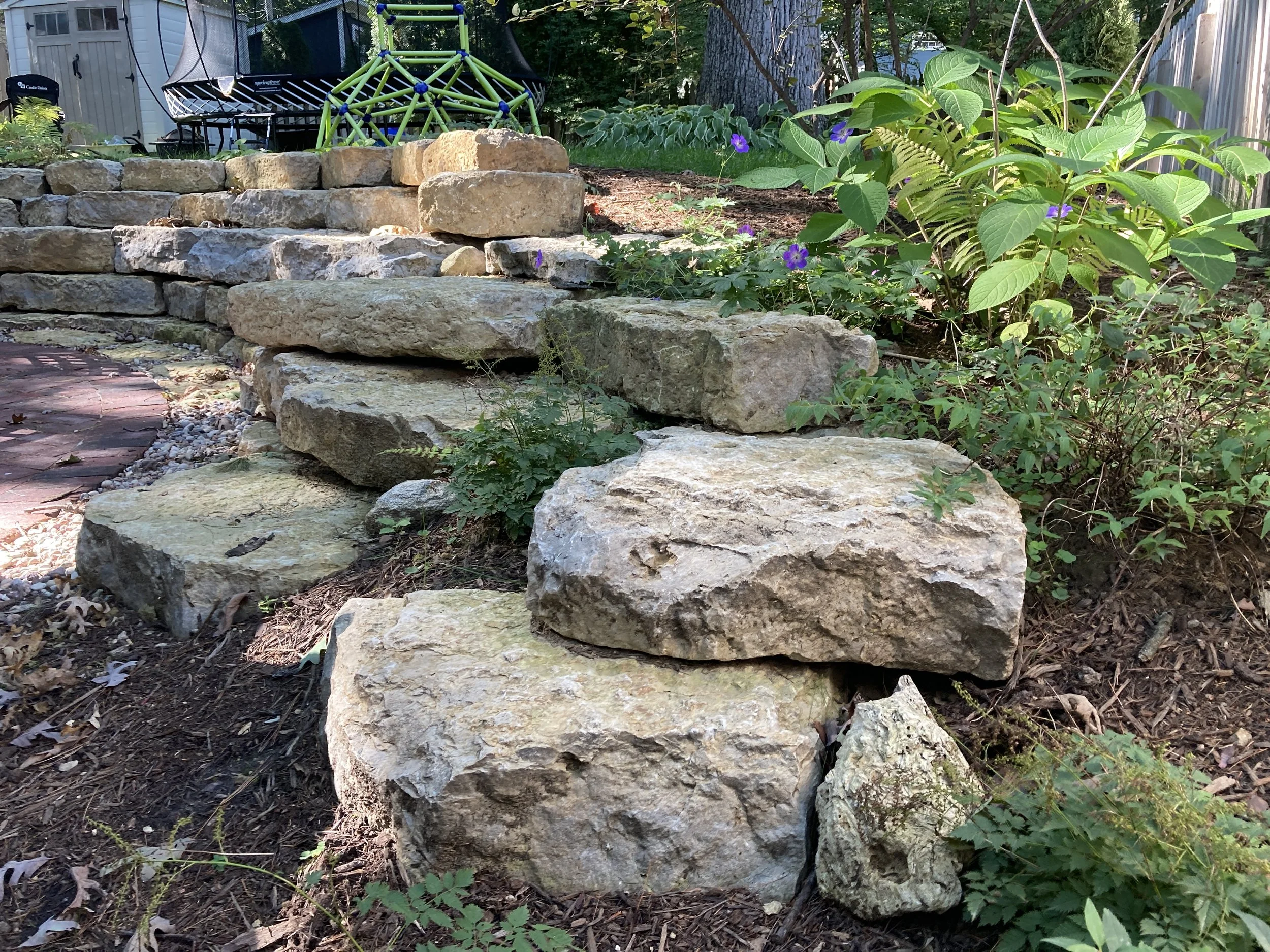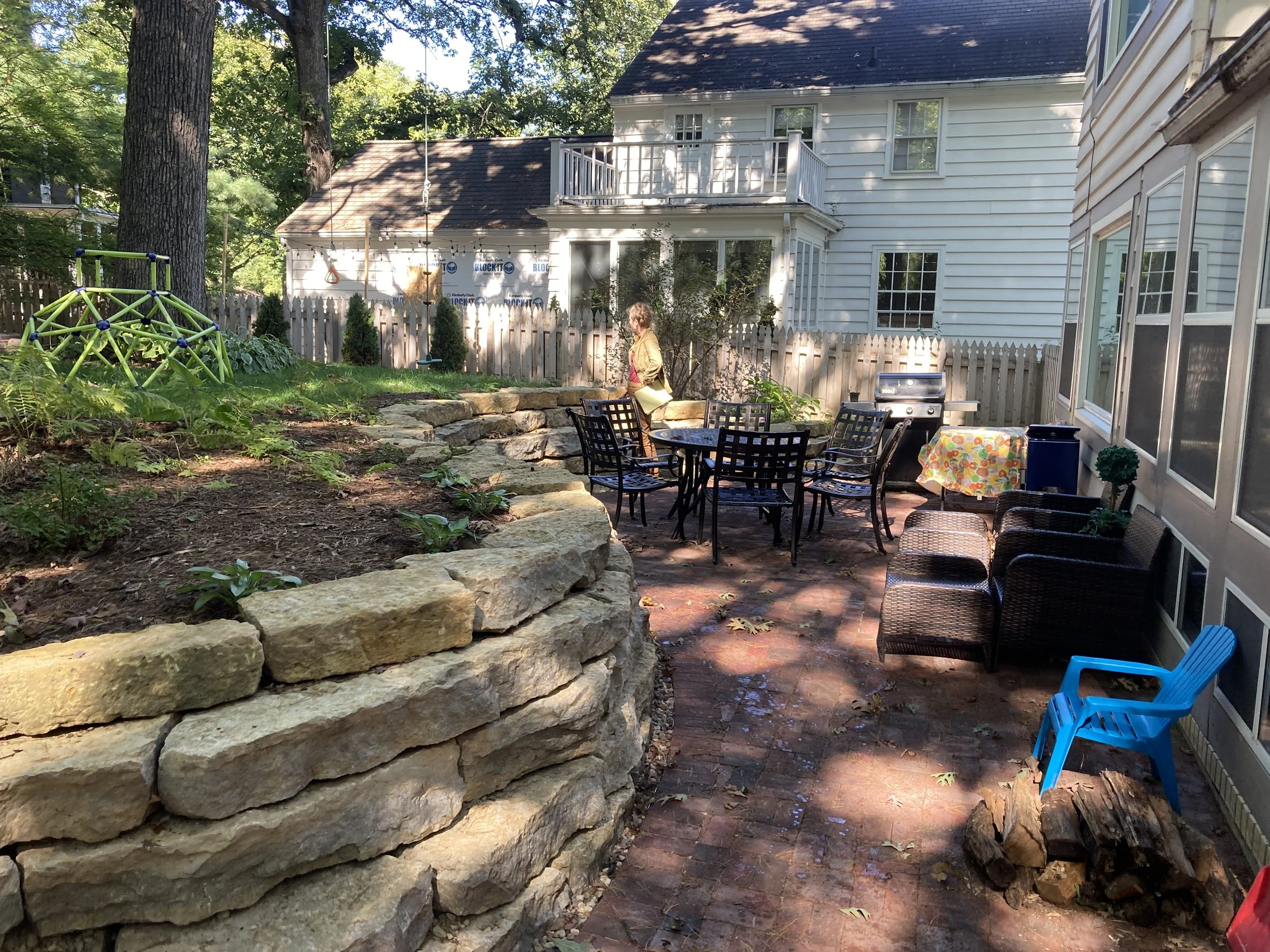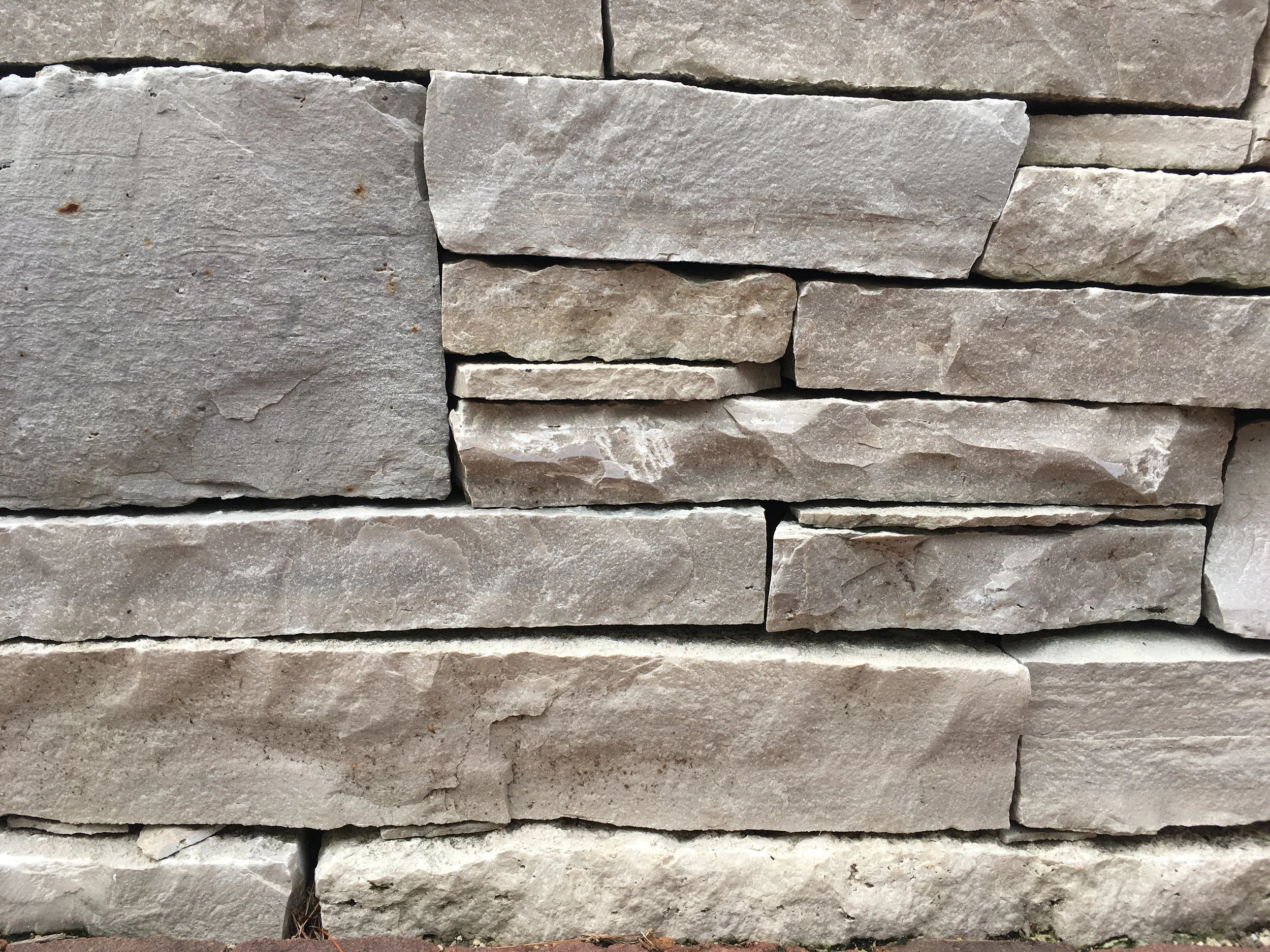Retaining Walls
Retaining walls provide beauty and enhanced function to the rolling landscapes found in Madison, WI. Terracing the landscape is a time tested way to create flatter, more usable spaces. Garden walls can also be a critical component to an effective stormwater management plan. Our landscape design staff will thoroughly investigate the site and work with you to understand your goals before designing your retaining wall and landscape.
We focus on natural stone retaining walls - especially Wisconsin's local limestone. We are capable of installing other stone/rock and block landscape walls but prefer the challenge and artistry of natural stone.
Our landscape craftspeople take a great deal of pride in building our retaining walls to last. Our walls are built on a solid, compacted base with ample drainage material behind to reduce the pressure of holding back saturated soils and freeze/thaw during the winter. We are supremely aware of the strength a wall gains by having stones overlap each other - locking each other in place. When joints between multiple stones align vertically it creates a weak point and the wall no longer functions as a unit.
We've learned a lot about what works (and what doesn't) by building and repairing walls throughout Madison and the surrounding Dane County, WI area. Below is a bit of information on various materials commonly used for retaining walls.
Retaining Wall Material Considerations
Boulders will last forever but are prone to shifting. The rounded shapes are difficult to build with. Once a wall begins to fail it is very difficult to repair and necessitates heavy equipment which damages the surrounding landscape.
Local Outcrop Stone is a low-cost, easily sourced material. It's also easy to work with . The problem is that it can rapidly start to fracture and break down. Every piece won't fracture and it's very difficult to predict which pieces it will be so it's a bit of a gamble. If you work with this material realize it may not be a long term wall - don't build a priceless element in front or just on top of it. We also recommend you provide room in front of the wall for a future wall to replace it so you don't need to remove all of the fracturing stone to build a new one. Also be sure to preserve equipment access.
Concrete Masonry Units (block) - If built properly these walls are highly functional and can have a very long life-span. Taller walls need to be engineered and have some exacting specifications necessary to be built appropriately. Appropriate drainage is critical with these walls as they are built very 'tight' and are prone to water/ice damage if water is allowed to build up behind them.
In most landscape settings block walls work just fine but we personally feel the aesthetic of these materials is best fit for commercial spaces or along highway embankments. There are numerous new products on the market each year and many of them look more pleasing than the older varieties. One thing to remember with any of these specialty type wall products is that it may be impossible to match the same pattern or color in the future if it is discontinued.
Snapped Limestone is a beautiful and locally available material. Much of the hardest limestone in the world is quarried between Milwaukee and Door County. Unless the material is sawn to a consistent height it is fairly difficult to install. The pieces are close in thickness but not quite close enough to install without a fair amount of trial and error— trying five pieces before finding one that works in a space.
Timbers can be a relatively easily installed option and have an aesthetic appropriate to more rustic or wooded sites. We generally expect about a fifteen year lifespan from timbers. To extend the life of timbers be sure all cut ends are treated at the time of installation and free-draining material is used around the wall to reduce the moisture in the surrounding area.


